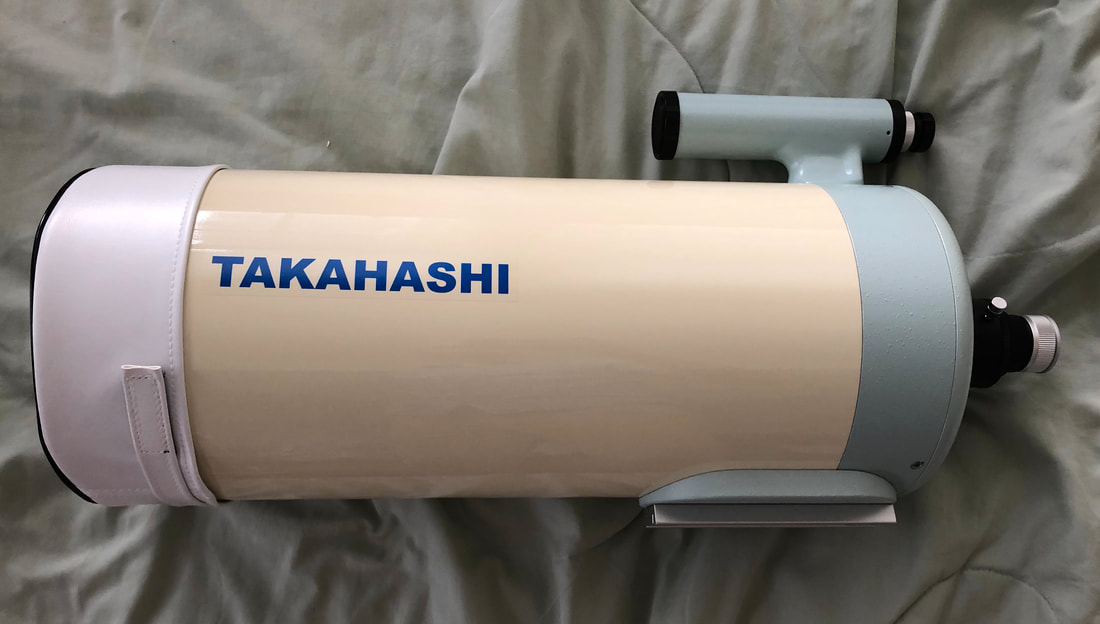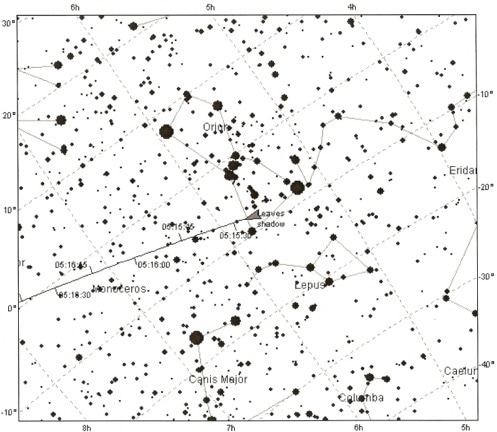|
It's been rainy here lately. Inspired by similar lists I've read elsewhere, I decided to pass the time by evaluating some of the telescopes I've owned. I figure I've purchased, used, and sold enough telescopes to gain a sense of what's underrated, overrated, and properly rated. What follows is anything but a scientific list. It's just a sampling of impressions, with not so much as a star test thrown in. Anyway, I'd divide the telescopes I've owned into a few tiers: Excellent: Takahashi FC-100DC TeleVue 85 Takahashi Mewlon 180 These telescopes are a joy to use. They're beautifully built. They're solid, sturdy, surprisingly lightweight, and wonderful to look at. Every little detail exudes quality and works just as it should. And their optical quality is nearly flawless. I say "nearly" because none of these telescopes are at the very top - the absolute pinnacle - of their market (okay, maybe the Mewlon is). They're close, but no cigar. The TeleVue apparently does not quite focus every color equally for the viewer (though I've yet to see evidence of this). The FC-100DC might have a touch more false color than the other four-inch refractors manufactured by Takahashi, past or present (I've noticed none). Both telescopes compensate for these relative shortcomings by being compact and easy to mount: no small thing when you value portability as much as I do. The DC, for example, is about two pounds lighter and a little shorter than the LZ, Takahashi's newest four-inch refractor, and that's no laughing matter when you're trying to build the most portable and stable grab-and-go setup you can. The TeleVue and Takahashi refractors have interesting differences, which I've described elsewhere. The TV 85 seems a bit more user friendly and gives up very little to the Takahashi, despite its smaller aperture. What do I mean by user friendly? Well, I constantly have to turn compression rings to fit diagonals or eyepieces on the Takahashi, and when I do I often find myself unscrewing some module that really should stay firmly fastened. I had to extensively research and then purchase a separate gizmo so that I could detach my finder and thereby store my refractor in a relatively small case. I had to repeat that research to find a right-angle finder that would fit in the bracket Takahashi supplies, and that was after buying a straight-through Takahashi finder (the quality is spectacular, but I just can't crane my neck enough to make it worthwhile). I prefer red dot finders for bright objects; I haven't found one that fits onto the telescope. The focuser doesn't have a fine focus knob, and the draw tube isn't long enough to accommodate every eyepiece. Even figuring out how to attach the telescope to a mount was a minor struggle. These are the little, admittedly surmountable hurdles you get with a Takahashi that the TeleVue, built within the familiar ecosystem of western telescope accessories and practices, never throws my way. And yet I prefer using the Takahashi when I can; the view is just a bit brighter, and maybe - maybe - a touch sharper. I wouldn't swear by that last point. Either way, these telescopes are nearly perfect to me, and they're priced accordingly. Good, but not quite great: Skywatcher 100ED Celestron C8 These telescopes offer around 90% of the quality you get in the above tier, but at roughly a third of the cost. Only by comparing these telescopes directly to their pricier competition would you notice the difference. As usual in this hobby, it's the details. An extra hint of false color; a slightly softer view. Cheaper materials; a less comfortable focuser. More variation between individual telescopes. The little things that make all the difference. Still, I've had many a rewarding night with the 100ED. At its sale price around Christmas, this is the best value on the market today. And on the used market, you can often buy one in mint condition for $400 to $500 USD. Good for the money: Celestron C6 Celestron C90 Celestron Omni XLT refractor Skywatcher 127mm Mak Speaking of value: these telescopes are nearly as good as the ones in the above tier, each in their own distinct ways, but all cost around $400 or less. Of the lot, the C90 stands out. You can get this telescope for around $120 USD, with a (flimsy) tripod and a (perfectly respectable) eyepiece. Sell the eyepiece and you're down to $100 for a telescope that offers shockingly good views of anything that can stand high magnifications (it's an F12, so it doesn't do wide field). Add to that its small size and quick cool down for a Maksutov, and this may be the best starter telescope for someone on a budget. Put it this way: if you set up a TV 85 and a C90 next to each other, the Orion Nebula wouldn't look very different at first glance - yet the TV 85 is twenty times more expensive! Then there's the C6. These days it's three, maybe four times pricier than the C90, and it shows a good deal more. I've found that the best advertisement for a C8, however, is owning a C6. Looking through a C6, you immediately wonder what those extra two inches of aperture could do. Then you upgrade to the C8 and realize just how much bigger and bulkier it is. Depending on what you want, this is a value that rivals the best on the market. The Omni XLT is a strange (and, I gather, rarely-seen) beast. The tube itself looks and feels solid enough, but all the extras - the finder, the focuser, the diagonal - are child's toys. It's hard to shake the feeling that you've been had. But the optics are shockingly good: excellent for an achromatic refractor and on par with those of the Explore Scientific AR 102 (see below). The telescope is so cheap that you can replace the toy accessories it comes with and still get good value for your money. Thoroughly mediocre: Celestron Starhopper This was my first telescope. The optics were quite good; everything else was just terrible. Let's just say that the cheap plastic focuser and the cardboard tube did not stand the test of time. By today's standards, you didn't get good value for your money by buying this telescope. Disappointing: Celestron Edge HD 800 Explore Scientific AR 102 Skywatcher Flextube 12" Dobsonian Note the name of this tier. None of these telescopes are objectively bad - well, with one possible exception - but none failed to live up to my expectations for them. Buying them taught me a thing or two about what to look for in a telescope. Aperture and online reviews certainly aren't everything. The Edge was the biggest surprise. It has rave reviews wherever you look. And when I used my Edge for the first time - see below - I was delighted. Everything looked quite sharp, I concluded, given the seeing. Given the seeing. I used that excuse many times in the following year. It turns out, in cold weather the telescope refused to cool down, and in warm weather it dewed over almost immediately - once, faster than I could attach a dew shield! Even after an hour or so on one summer's night, the view of the Moon remained so soft that I was ashamed to show it to a curious onlooker (and she seemed thoroughly underwhelmed). What went wrong? I'm still scratching my head. Maybe I never did collimate it properly, but that seems implausible. Everything looked right on that front. Maybe it just needed a couple hours to acclimate - a couple hours I never had. The Skywatcher was simply too much telescope for me, then or now. It was so heavy and unwieldy that I barely used it, and when I did it refused to cool down. This is the telescope that taught me to avoid large apertures for urban stargazing. It didn't help that - again - the fit and finish disappointed. Rubber pieces came off the focuser when I tried to sell it! The buyer didn't flinch - I guess the asking price was that good - but I wasn't impressed. The biggest disappointment of all, however, turned out to be the AR 102. This is an impressive-looking telescope - in advertisements at least - and it has all the appearance of a can't-miss value. You get a quality finder scope and an excellent diagonal with a 4-inch refractor that promises very little false color, all for the price of a really good eyepiece. How can you go wrong? As always, the devil is in the details. The dew shield is flimsy. Screws are plastic. The label started to peel off the tube. And, worst of all: the focuser simply gave out one night and wouldn't work smoothly again. To their credit, Explore Scientific offered to fix it. But it took them so long to get back to me that I had already sold the telescope at a huge discount. What seemed like great value was anything but. I will say that the optical quality of the telescope was very good for an achromat. False color was, in general, noticeable but inoffensive on bright objects. The view of the Orion Nebula rivaled that of the 100ED. But the overall package was simply too good to be true. Gun to my head, I get to keep one telescope. Which do I choose?
It's an excruciatingly tough call between the TV 85 and the FC-100DC. In the end, the Takahashi would probably win me over with its larger aperture. But I would pine for the TeleVue.
0 Comments
Leave a Reply. |
Archives
March 2024
Categories
All
|




 RSS Feed
RSS Feed